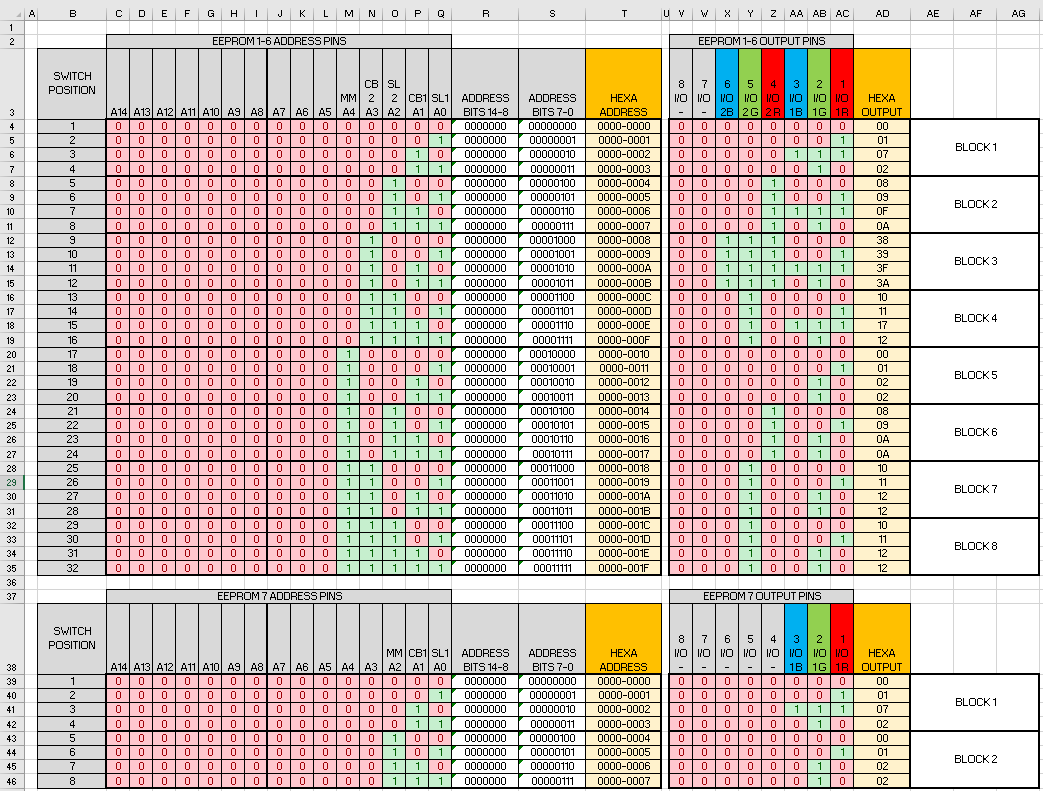I am just diving into the world of multiplexers, so my knowledge of them is not the greatest. I am trying to develop a circuit that can control 10 RGB LEDS (30 total LEDs) via 2 inputs per LED and one input that affects all LEDs (21 total inputs). I would like to achieve this with an EEPROM, so I was going to try a LED multiplexer on the output pin, but I am unsure if there exists a multiplexer that can pull in 21 inputs and condense them down to 8 inputs so that they are addressable on the input side.
I would like to avoid a microcontroller, because I want to see if it can be done with an EEPROM. Thanks for the help ahead of time!
Truth Table utilizing 7 EEPROM ICs:

I am sure that this is super inefficient cost-wise and space-wise, since it uses 7 EEPROMS for 13 RGB LEDs (39 total LEDs). The left table is the input into the 15 Address pins on the EEPROM, and the right table is the I/O output pins to the LEDs. The table with Blocks 1-8 control 12 RGB LEDs (36 LEDs), and the bottom table is a single EEPROM that controls a single RGB LED (3 LEDs). Let me know if this all makes since or if I can clarify anything.


21 inputs and condense them down to 8 inputs... are you talking about 21 bit addressing, or are you talking about throwing away 13 inputs? .... what are you trying to accomplish with the LEDs? \$\endgroup\$